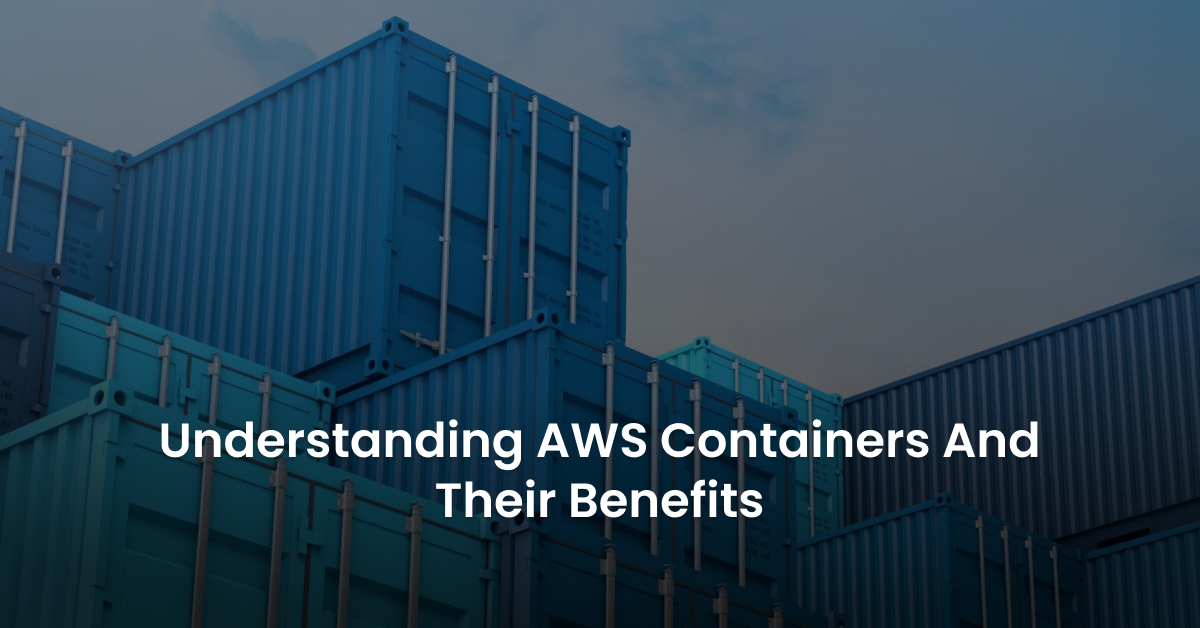Cloud Engineers and Developers can now use AWS (Amazon Web Services) Containers for packaging codes and dependencies in a single object. Unlike Virtual Machines, Containers have OS, patches, and dependencies in a single repository, which improves the efficiency of projects.
Compared with the traditional environment, Container images are much smaller and lightweight. Containers work by sharing the guest OS, bins, and libraries.
Containers provide up to 80% resource utilization compared to the lift and shift method, which yields up to 30% resource utilization.
AWS Container Services
AWS offers several Container services like Elastic Container Registry (ECR), Elastic Container Service (ECS), Elastic Compute Cloud (EC2), Kubernetes (EKS), and AWS Fargate.
AWS ECS
One way of using a Container engine is via the AWS Elastic Container Service. ECS lets you build scalable containerized apps and micro-services. ECS has inbuilt security features to protect your Containers. AWS users can also automate the launch of several Containers using the Continuous Integration and Delivery CI/CD model.
ECS is also a cheap way, yielding savings of up to 50% with the pay-as-you-go model. AWS ECS also integrates seamlessly with other AWS services. You can choose from several Container images to make your application. ECS works well with a hybrid environment and supports batch-processing jobs.
AWS EKS
The AWS Kubernetes service is a reliable way of running containerized apps over Kubernetes. Kubernetes is an open-source system used for running Containerized workloads. EKS has an auto-scaling feature, which helps in right-sizing resources. In addition, EKS has more security layers comprised of patches and automatic security updates for the Kubernetes environment. Like ECS, EKS supports both on premise and hybrid cloud environments.
The EKS console lets you view worker nodes and serverless Containers for your EKS workloads. The Elastic Kubernetes Service is ideal for Machine Learning workflows because of the Kubeflow feature. You can auto-scale EKS workloads in multiple availability zones.
AWS ECR
AWS users can manage the storage and encryption of Container images using the ECR service. With the Elastic Container Registry Service, you can make images fast by compressing them and making them available on-demand. ECR lets you import existing Containerized apps without installing any dependencies.
ECR lets you securely share Container images via the HTTPS connection. Automatic encryption adds an extra layer to stored resources. Users in highly regulated environments can meet compliance through ECR storage. You can also add tags and policies to increase efficiency.
AWS Fargate
Use AWS Fargate to deploy serverless Containers. AWS Fargate integrates with ECS and EKS to remove the need for server management. Instead of managing servers, you only manage the applications. Based on the architecture, AWS Fargate isolates the most secure applications.
AWS Fargate integrates with CloudWatch to pull critical application metrics. In the traditional model, AWS users had to spend time deploying a compute engine, paying for it, and rightsizing EC2. AWS Fargate removes all these inefficiencies and leads to a faster time to market. Use AWS Fargate to build web applications, deploy APIs, and run microservices at optimized costs.
Why Use AWS Containers?
With AWS Containers, scaling is easy. You can access all dependencies, patches, and files on one resource to achieve consistency from a testing environment through development to a production environment.
Security
AWS Containers have added security layers from encryption to AWS governance. Top security helps users in highly regulated environments can meet compliance. The isolation of apps in damage control of a cyber attack. When one cluster of apps fails, it doesn’t affect the performance of other apps. In addition, users can add restrictive permissions to limit app access. AWS has hundreds of governance policies to secure your infrastructure.
Performance
AWS Containers yield high-performance apps and services due to their optimized architecture. Containers make good use of unused capacity and allow auto-scaling resources, which minimizes lag. You can also choose from up to 22 AWS regions, and deploy your apps in the region with the lowest on-demand prices, while getting enough cloud capacity.
APIs
APIs (application programming interfaces) give solutions that would otherwise be difficult to implement manually. AWS Containers supports APIs and the deployment of micro-services, which adds more diversity to the AWS environment. You can use micro-service to get more networking, security, and monitoring capabilities. You can also link apps to monitor your cloud, linked with other analytics and business intelligence tools to get more insights from your Containerized workloads.
The Bottom Line
Overall, AWS Containers give a wide choice of services, tools, and dependencies to help solve technical problems. You can even develop MacOS apps on AWS Containers.
You can now enhance the reliability, scalability, and cost-saving capabilities of AWS Containers by managing them through the nOps cloud management platform. nOps can help you to deploy and run Docker containers on AWS without misconfiguration seamlessly. nOps will assist you in choosing the right resources and gives recommendations on optimizing your cloud.



